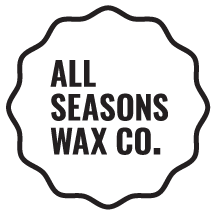Frequently Asked Questions
Where does the wax come from?
One of the most common questions we receive is often ‘Where is it from?’, ‘Where is the soy from?’ or ‘Where are you based?’ and well, it’s a good question!
It’s a 3-part answer:
1. Our soybeans come from one of the largest agricultural producers in the world! Based in Sao Paolo, Brazil our beans are farmed and sourced sustainably – and we believe the Brazilian soybean oil is far superior for candle-wax than all others on the market.
2. Our manufacturing process (hydrogenation, blending, flaking and packaging) is performed in a high-tech food manufacturing plant in Shanghai, China. We’ve chosen to use this factory for the access to important hydrogenating and flaking machinery.
3. We are officially based in Melbourne, Australia – this is where our head office is, where products are developed and tested in our commissioned lab.
Which wax is the best?
This is like asking a parent to decide which one of their children they love most!
All of our waxes are unique. Each one with a different set of pros and cons. We love all of our waxes equally and would suggest reading about each wax and deciding which one is the best fit for you!
Is All Seasons Wax organic?
Whilst our wax is as clean and pure as anything else available on the market – it’s impossible to refer to soy wax as ‘organic’ due to the hydrogenation process it must go through to convert liquid soya oil into a solid form.
How much fragrance can I add?
This depends on what you’re looking to achieve. We normally recommend between 6-8% and then if you can see the wax can tolerate that type of fragrance at that level – then you have the option to go up to 8-10%.
Testing is key. Each fragrance has different a different potency and will interact different with different wax.
How hot do I melt it? When do I add fragrance?
Each one of our waxes differs slightly and so do our suggested temperatures.
Check out the wax comparison table here: https://allseasonswaxcompany.com.au/technical-specs
What wicks are suitable with ASW?
All wicks are suitable from wood-wicks, pure cotton and paper core.
We always suggest extensive testing with any change of wicks, wax, container or fragrance.
Can I blend different All Season Waxes?
Yes! all of our waxes are compatible with each other. You can blend any of our four waxes together to achieve the exact effect you’re looking for.
How long should I allow All Seasons Wax to cure for?
We always recommend at least 48 hours once the candles have set to completely cure.
It’s great to allow this time for the fragrance to completely fuse with the wax on a molecular level and to allow for the cold throw to properly develop.
Frosting – What is it? How can I prevent it?
Frosting goes by many names in the DIY candle community such as blooming or crystallising.
Essentially what is occurring is the same sensation as when a block of chocolate is left out and you see a white film forming on the surface.
This white film is actually a network of organic micro-crystals which is caused by the urge of the soya bean to return to its natural state once the wax is heated and then cooled.
There are many theories on ways to reduce frosting which is completely normal and features with all natural, soy based waxes.
Frosting is more prevalent when the liquid wax is ‘shocked’ with sudden changes in temperature.
Our suggestions to reduce frosting is to ensure the wax the cools at a steady rate and that the ambient room temperature remains consistent.
What we suggest is pouring at intervals of +/- 10°C and noting the effects different fragrances and percentages have on the resulting candles – in this industry; testing, trial and error are key.
And finally, on frosting – don’t beat yourself up over it! Many if not all makers with natural waxes encounter frosting to some degree – imperfection is a part of natural beauty!

